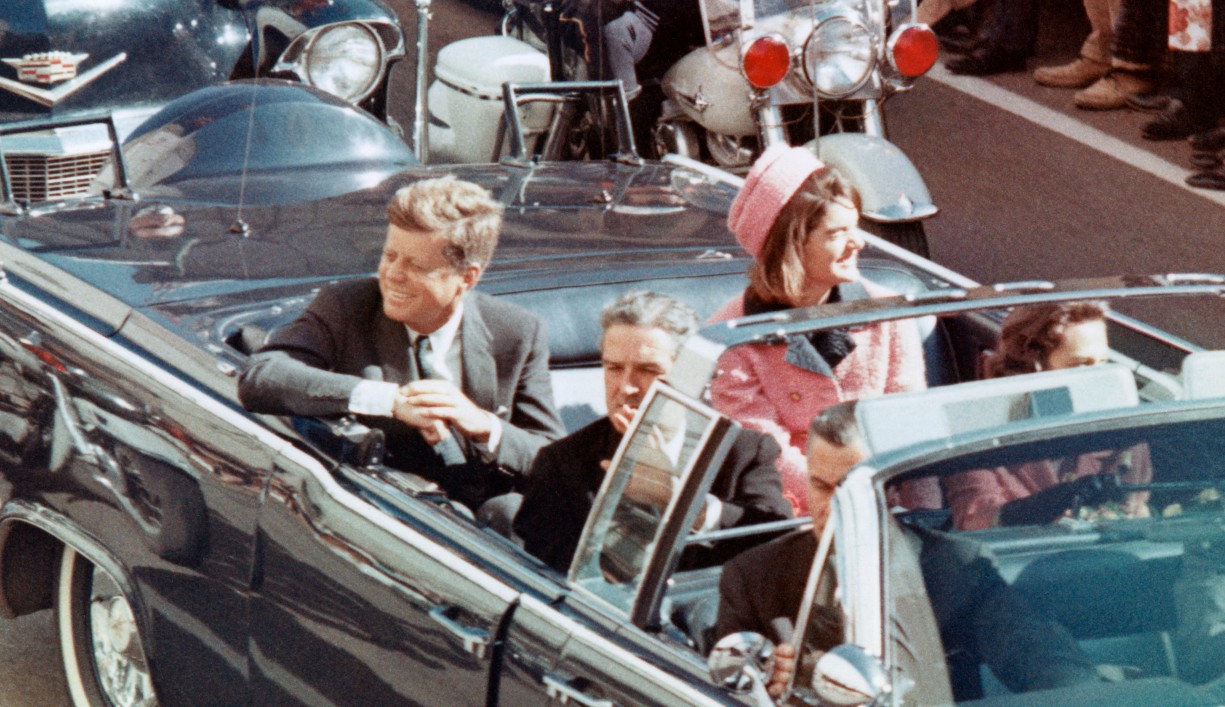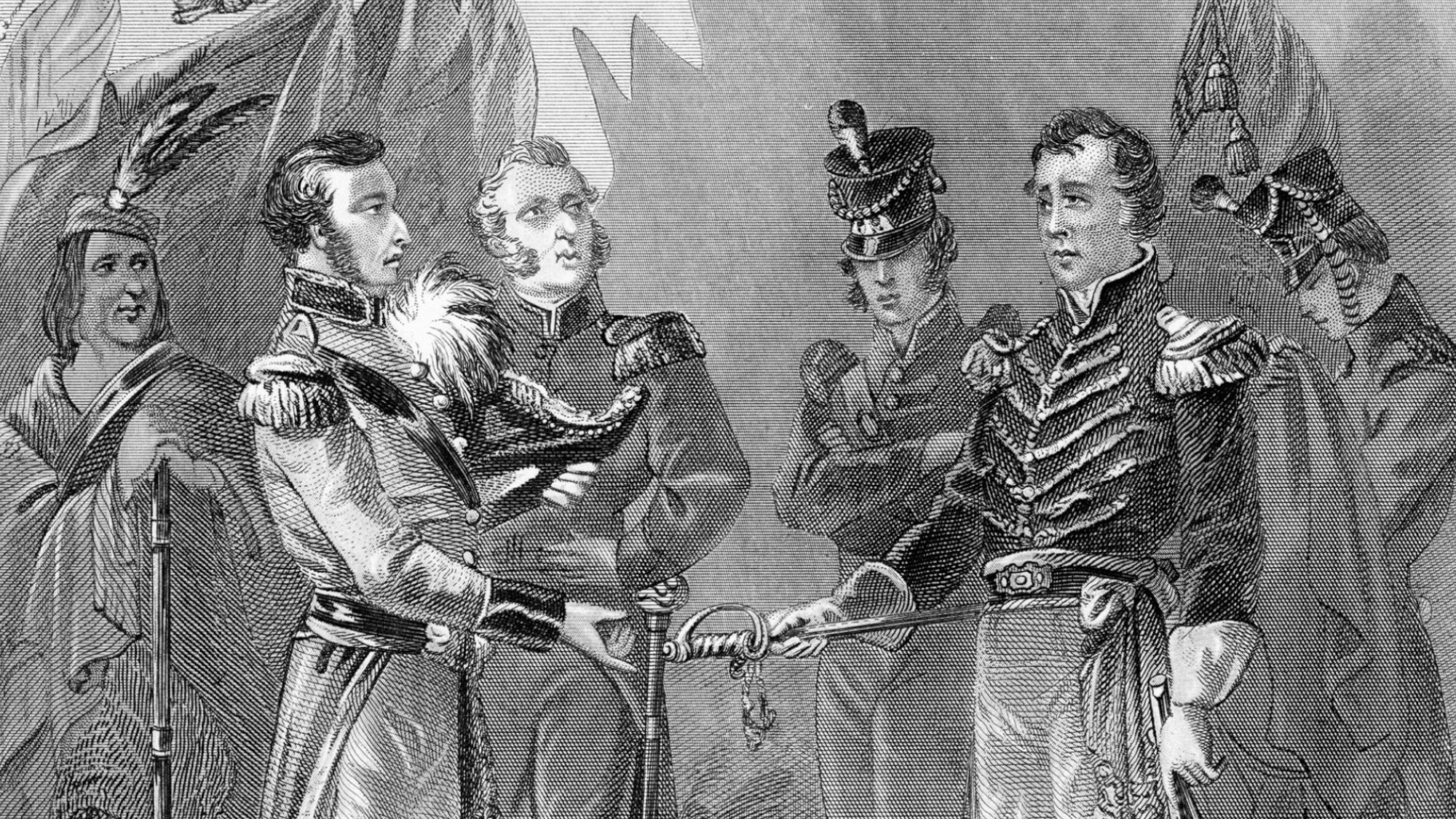The JFK assassination conspiracy theories
Release of remaining classified documents could shed light on whether shooter acted alone or was part of wider conspiracy

Donald Trump has vowed to release "all" government records relating to the assassination of John F. Kennedy, one of the defining events of the 20th century that continues to divide opinion more than 60 years on.
The current US president signed an executive order on his first day in office ordering classified files on the assassination of JFK in 1963 – along with those related to the deaths in 1968 of his brother Robert F. Kennedy and Martin Luther King Jr – to be made public.
Around 80,000 pages of files concerning the JFK shooting are expected to be released on Tuesday afternoon. Trump told reporters the massive trove is "interesting" but gave little hint of what will be in it, "leaving conspiracy theorists on tenterhooks", said the Daily Mail.
The Week
Escape your echo chamber. Get the facts behind the news, plus analysis from multiple perspectives.

Sign up for The Week's Free Newsletters
From our morning news briefing to a weekly Good News Newsletter, get the best of The Week delivered directly to your inbox.
From our morning news briefing to a weekly Good News Newsletter, get the best of The Week delivered directly to your inbox.
How did the events of 22 November 1963 unfold?
Having won the presidency in a knife-edge election against Richard Nixon in 1960, Kennedy navigated the Cuban Missile Crisis and pushed for civil rights. Looking to build support for his renomination, on 21 November 1963 he travelled to Texas on Air Force One for a two-day, five-city tour of the key battleground state. After stops in San Antonio and Houston, he spent the first night at the Hotel Texas in Fort Worth.
In his suite, Kennedy was shown a black-bordered advert in that day's Dallas Morning News, which accused him of pro-Communist sympathies; he mused about how easy it would be to assassinate a travelling president. After taking a short flight to Dallas Love Field Airport, Kennedy got into the back seat of a convertible limousine alongside his wife Jackie. John Connally, Texas's Democratic governor and his wife, Nellie, were in the same car, sitting in front of the president and his wife; Kennedy's vice-president, Lyndon B. Johnson, and his wife Claudia were in another car.
A 150,000-strong crowd had come to greet them. At around 12.30pm, Kennedy's car turned onto Dealey Plaza in downtown Dallas. As it passed the Texas School Book Depository, gunfire was heard: Kennedy was hit by one bullet in his neck, and another – fatally – in the back of his head. "They have killed my husband," Jackie cried out. "I have his brains in my hand."

The president and first lady smile at the crowds lining their motorcade route in Dallas minutes before Kennedy was assassinated
What happened to Kennedy next?
His car went directly to the Parkland Memorial Hospital, around four miles away, but it was soon apparent that he couldn't be saved. A Catholic priest administered the last rites and, at 1pm, Kennedy was pronounced dead, aged 46. At 2.38pm, a stony-faced Lyndon B. Johnson took the oath of office on board Air Force One at Love Field Airport. Jackie, still in blood-stained clothes, stood next to him. Kennedy's body was then taken to Washington where, over 21 hours, 250,000 people paid their respects as it lay in state. Kennedy was buried in Arlington National Cemetery on 25 November. By then, though, media attention was focused on the fate of Lee Harvey Oswald, the prime suspect.
A free daily email with the biggest news stories of the day – and the best features from TheWeek.com
What happened to Oswald?
Witnesses saw a man firing from the sixth floor of the Texas School Book Depository, where Oswald worked. He left soon afterwards, and 90 minutes later shot dead a policeman, J.D. Tippit, who tried to arrest him. Oswald, then 24, was an emotionally disturbed high-school dropout, who had joined the US marines at 17 – he was a trained sharpshooter – and had been court-martialled twice. In 1959, he had defected to the Soviet Union, and had spent over two years there, but had returned, with his Russian wife, Marina. Upon his arrest, Oswald denied having killed Kennedy, claiming he was "a patsy", a fall guy. But while being transferred from Dallas Police HQ on 24 November, he was shot dead on live TV by Jack Ruby, a nightclub owner. Ruby claimed that he had been deeply upset by the assassination, and had killed Oswald in order to spare Jackie Kennedy from having to testify at Oswald's trial.

Lee Harvey Oswald is pictured after his arrest on 22 November
So there was never a trial?
No, but the Warren Commission was set up by President Johnson to investigate. It was chaired by the US chief justice, Earl Warren, with six others, including four politicians and former CIA director Allen Dulles. It reported by September 1964. The central conclusion of its 888-page report was that Oswald acted alone, firing three bullets from a sixth-floor window, the third of which killed Kennedy. It offered no "definitive" motive and dismissed suggestions of Russian involvement, finding "no evidence" that Oswald was "part of any conspiracy, domestic or foreign". It also concluded that Ruby acted alone, and had no prior relationship to Oswald or organised crime. The US establishment accepted all this, but by 1966 less than 40% of Americans were convinced.
Why was the Warren Commission doubted?
It was widely felt that the commission's cut-and-dried conclusions simply didn't explain a very murky series of events. Three of the commission's members later doubted its findings, and it has since emerged that the Johnson administration had pushed hard to find Oswald solely responsible – in order, it seems, to avoid conflict with the Soviet Union. In some respects the report was plain wrong: it found that the CIA had little intelligence on Oswald, and played down his links to Cuban groups, because the agency had misled it. To prop up the lone gunman verdict, it supported the "single-bullet theory": that one bullet had hit both Kennedy and Connally, causing a total of seven exit and entry wounds. In 1979, the Select Committee on Assassinations produced a new report concluding that JFK was probably killed as the result of a conspiracy.
What have we learnt since?
In 1992, Congress passed the JFK Records Act, calling for the release of all assassination-related documents within 25 years, unless they posed certain risks to national defence or intelligence. The tens of thousands released since then have included revelations that the FBI had warned Dallas police of a threat to kill Oswald; that Oswald spoke to a member of a KGB assassination unit weeks before the killing; that the CIA had an extensive file on him, which it later hid.
About 98% of the collection, which contains over 5 million pages of records, has already been made public, according to Forbes. The last large dump of documents was in 2022, when the National Archives released nearly 13,000 new files. However, thousands of documents have remained fully or partly locked away, ostensibly to protect still-living agents and informants, after Trump in his first term and then Joe Biden issued extensions to keep certain documents private.
What are the conspiracy theories?
Conspiracy theories existed before the death of JFK: there was a long tradition of suspicious political thinking in the US, particularly on the Right. But the assassination helped conspiracist thinking become a cultural phenomenon. It began in earnest with Mark Lane's 1966 book, "Rush to Judgment", which critiqued the Warren Commission.
As the official theory fell out of favour, alternatives were proposed: JFK had been killed by the Soviet or Cuban governments; by Cuban exiles; by the CIA, with which he often clashed; by the Mafia; by Texan right-wingers. In 1967, the New Yorker noted that amateur experts – "assassination buffs" – were poring over every detail: the ballistics; the autopsy; the 8mm film taken at the scene by Abraham Zapruder; unconfirmed reports of a second shooter on the "grassy knoll" in Dealey Plaza. About 40,000 books have been published about Kennedy, and, according to the author Vincent Bugliosi, doubters of the lone gunman theory have accused 42 groups and 82 assassins of being involved. Oliver Stone's 1991 film "JFK" turbocharged the conspiracists.
In retrospect, the assassination marked an inflection point in US history – aided by Vietnam and Watergate – when suspicion of authority became a major feature of American life.
-
 How to financially prepare for divorce
How to financially prepare for divorceThe Explainer Facing ‘irreconcilable differences’ does not have to be financially devastating
-
 Why it’s important to shop around for a mortgage and what to look for
Why it’s important to shop around for a mortgage and what to look forThe Explainer You can save big by comparing different mortgage offers
-
 4 ways to save on rising health care costs
4 ways to save on rising health care costsThe Explainer Health care expenses are part of an overall increase in the cost of living for Americans
